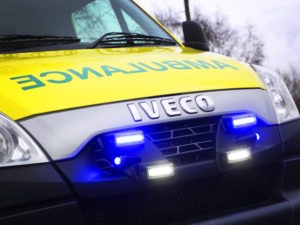Improved fleet procurement and management are key areas that ambulance trusts should address to drive performance while they should also plan ahead for clean air zones.

These are some of the findings of a recent report by Lord Carter of Coles covering ‘Operational productivity and performance in English NHS Ambulance Trusts’ and including a focus on operational improvements.
Published earlier this autumn, the report sets out effective fleet management is one of three important areas where changes must be made.
The analysis says that “it is simply unacceptable that trusts purchase different ambulances and stock them with different equipment and medicines. This demonstrably increases costs and there is an unarguable case to develop a common specification across England and move rapidly to centralised procurement for the ambulance fleet”.
The report found there was significant variation in the average age of vehicles and also said that most ambulance services will need to consider how they reduce their environmental impact. All ambulances in England currently use diesel and regulatory changes will impact on trusts well before 2040, including through London’s Ultra Low Emission Zone, which comes into effect in April 2019, and the clean air zones due in various cities from 2020.
Responding to this challenge will require reduction in fleet age in the short-term and exploration of new alternatives such as electric ambulances and other innovative solutions.
The report also says that while staff may be attached to using a particular ambulance model and reluctant to change, its work among frontline paramedics and fleet managers had seen them agree that moving to a common specification was the right direction of travel and they rated a van conversion highest from a design and usability perspective.
Available data suggests that in the current fleet, van conversions appear to offer better value for money than box conversions. The figures in the report show the average cost of a box conversion is around 20% more over both five and seven years while also bringing increased fuel costs.
The report also sets out that technology like black boxes and CCTV must become standard issue and make ready systems must be put in place across the country to drive productivity.
It also urges ambulance trusts to look at fleet management, saying that older vehicles were noted as being more vulnerable to breakdowns with careful monitoring and scheduling of preventative maintenance required to minimise the risk of additional downtime.
And the report says trusts should review their fuel management arrangements to ensure they are securing the best price for fuel and identify whether there is scope to increase the proportion of bunkered fuel or similar arrangements as part of their implementation of a make ready system. Where fuel cards are used it is important that appropriate governance procedures are in place to prevent fraud. Work is currently underway with the Crown Commercial Service to scope out the requirements for a new fuel card competition across the ambulance, fire and police services.
The report’s recommendation on the use of fleet management software has been welcomed by Chevin Fleet Solutions, which said it’s seen increased interest in its fleet management software products from ambulance trusts and other blue light services in recent years.
David Gladding, global sales and marketing director, Chevin Fleet Solutions, said: “Managing the data produced by fleets can be misunderstood by the wider organisation in terms of strategic and tactical value. But those fleets who can measure and interpret data have seen significant reductions in administrative tasks and gained a clearer picture of fleet availability and specifications required during vehicle and associated asset procurement.”
He added: “Many of the trusts who approach us regarding our software reflect similar comments made in this report. Ambulance trusts that we do work alongside have achieved notable process improvements and much-improved vehicle utilisation and availability. Cost savings have increased whilst downtime has been reduced due to the level of visibility such software provides.”
To access the Lord Carter’s report, click here.

